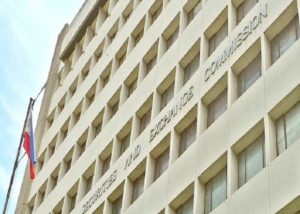Market watchers expect the central bank to push through with an expected interest rate cut when the policy-making Monetary Board convenes on Feb. 6, despite the government’s announcement of an uptick in the inflation rate for January.
In fact, Bangko Sentral ng Pilipinas (BSP) Governor Benjamin Diokno pointed out on Wednesday morning that the January inflation rate of 2.9 percent “was within the BSP’s forecast range of 2.5-3.3 percent.”
“This is consistent with the BSP’s prevailing assessment that inflation is expected to gradually approach the midpoint of the target range in 2020 and 2021,” he said in a tweet, and added that the central bank would consider all the latest developments in the Monetary Board’s assessment of domestic and external conditions in its meeting on Thursday.
As this developed, economists and market watchers said the central bank would likely proceed with a 25-basis point reduction in its overnight borrowing rate—which banks use as a basis for pricing their own loans—in an effort to help the Philippine economy to return to above-6-percent growth levels.
“Despite the uptick in inflation, we expect the BSP to cut policy rates by 25 basis points at the Feb. 6 meeting with [its] 2020 inflation forecast pegged at 2.9,” ING Manila senior economist Nicholas Mapa said in an email to the media.
“Given the backdrop for slowing global growth, upside risks to the inflation outlook are dampened considerably with crude oil prices tanking on expectations for weaker global growth and depressed oil demand from China,” he added.
The official of the Dutch banking giant’s local unfits said that, with inflation still expected to remain within target and as global growth was likely to be hampered by the spillover effects from the recent Wuhan coronavirus episode, he expected the central bank to resume unwinding its previous policy tightening to bolster growth momentum and chase the 6.5-7.5 percent growth target.
This was echoed by Bank of the Philippine Islands chief economist Jun Neri.
With inflation still below 3 percent, the BSP may cut its policy rate by 25 basis points in its February policy meeting,” he said, pointing to the central bank chief’s recent statement that a 50-basis point cut was still on the table given the likelihood of within-target inflation this year.
“However, follow-through cuts may be more challenging given the upside risks to inflation emanating from the possibility of higher rice prices and the implementation of excise taxes,” he said.
Neri noted that peso depreciation pressures from portfolio outflows, lower tourism receipts, and potential slowdown in remittances might also prevent the BSP from cutting its key rate all the way down to 3 percent.
“As we have said before, the risk of significant portfolio outflow is high when inflation is above the policy rate,” Neri said.


